The Wolfsonian produces a wide variety of award-winning and critically acclaimed publications that explore the role of art and design in shaping the modern world. To purchase, visit our Design Store + Coffee Bar or call 305.535.2680.
Publications
Catalogues + Companion Books
Our catalogues and companion books expand upon our exhibitions with essays and high-quality illustrations. While catalogues follow the curatorial narrative, companion books address related questions or themes that fall outside of an exhibition's scope or are only briefly touched upon in the galleries.
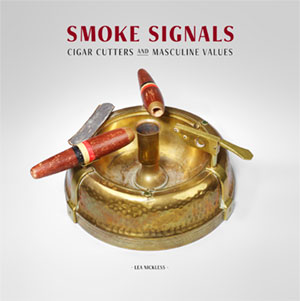
Smoke Signals
Late 19th and 20th-century cigar cutters were often elaborate personal emblems for the men who used them. Smoke Signals explores how cutters in many forms—hunting dogs, champagne bottles, pistols, and more—offer an unusual window into the broader masculine culture around cigar smoking, from social ambition to attitudes about women.
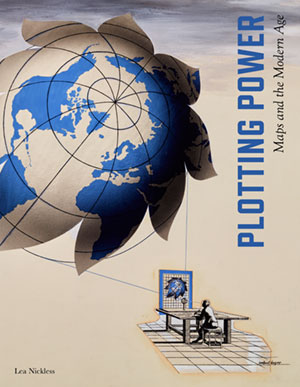
Plotting Power
Mirrors of our dreams and fears, maps draw literal lines between "us" and "other," more often reflecting how we see it than how it is. This book follows the use of map-like imagery for political, commercial, and other purposes during the first half of the 20th century—when the possibilities of travel and technology opened new horizons for global ambition—tracing how maps and other representations of geography were shaped by design strategies, diverse agendas, and signature stories of modern history.
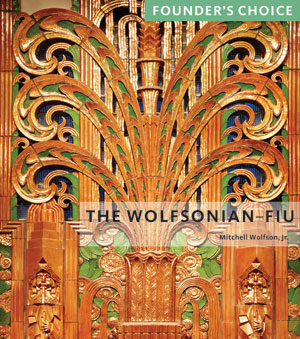
Founder's Choice
The debut of Scala Publishers' new series, Founder's Choice presents 37 objects selected by museum founder Mitchell "Micky" Wolfson, Jr., from his namesake institutions, The Wolfsonian in Miami Beach and The Wolfsoniana in Genoa, Italy. Through acquisition backstories, musings, and tales of pursuit, Wolfson sheds light on these singular collections of modern-age material and his adventures/misadventures in 7 decades of collecting.

Promising Paradise
An exploration of America's mid-century fascination with Cuba, Promising Paradise features more than 150 rare photographs, movie posters, and ephemera that promoted Cuba as a glamorous paradise and created a frenzy for Cuban and Latin culture in the U.S. The book includes essays by Rosa Lowinger And Francis Xavier Luca as well as a note from collector Vicki Gold Levi.
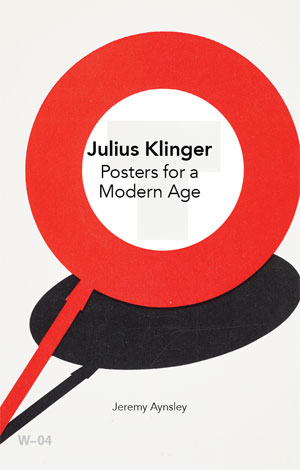
Julius Klinger
Julius Klinger is recognized as one of the leading graphic designers of the early 20th century. Traveling between Vienna and Berlin, Klinger helped shape modern commercial visual culture through his innovative posters, illustrations, typography, and mass promotional campaigns. This publication features more than 40 color images, an essay by design historian Jeremy Aynsely, and excerpts from Klinger's own writings.
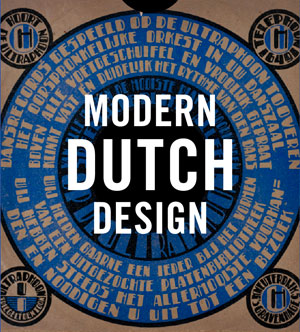
Modern Dutch Design
From 1890 to 1940, the Netherlands first built its reputation as a center for innovative design. Modern Dutch Design examines this evolution through essays by curator Silvia Barisione and other contributors and features more than 250 illustrations drawn from The Wolfsonian's extensive collection of Dutch furniture, decorative arts, design drawings, posters and bookbindings.
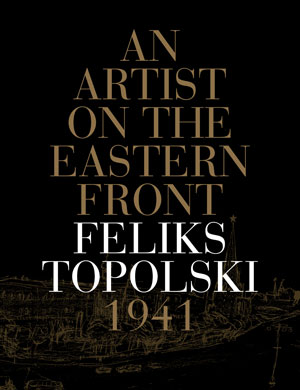
An Artist on the Eastern Front
An Artist on the Eastern Front presents sketches made by Feliks Topolski, an artist who accompanied a British transport convoy to the Soviet Union in 1941. Made when the invading German army occupied much of the country and threatened to take Moscow, the drawings offer a unique view of everyday life in the USSR. The book also includes writing by art historian Laura Brandon that places the work of the Polish-born, London-based Topolski in the context of Britain's Second World War art campaign.
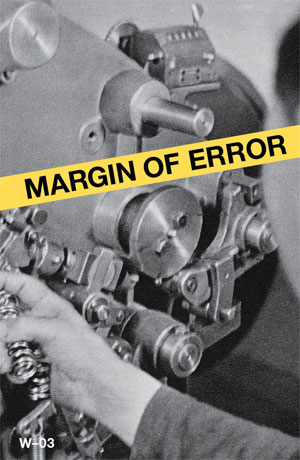
Margin of Error
In Margin of Error, curator Matthew Abess considers how the visionary promise of a mechanical modern age was confounded by risk, practical limitations, and the unexpected. From glass-house fires and electrified bodies to vehicular hazards and workplace perils, this richly illustrated volume surveys the visual language that expressed the hopes, and the anxieties, of our technological times.
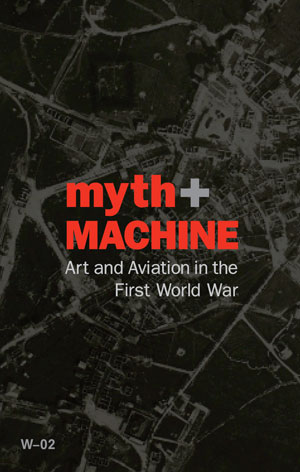
Myth and Machine
World War I was the first major armed conflict to be fought not just on land and sea, but in the sky. Airplanes, more than any other kind of armament, had a magnetic appeal for artists as an embodiment of the highly technological and immensely destructive mode of warfare that emerged between 1914 and 1918. Through essays by Jon Mogul and Peter Clericuzio, Myth and Machine examines how artists envisioned aerial warfare, which served as a source of both fear and wonder, a new vantage from which to depict war and its impacts, and an arena for action by a distinctly modern kind of hero.
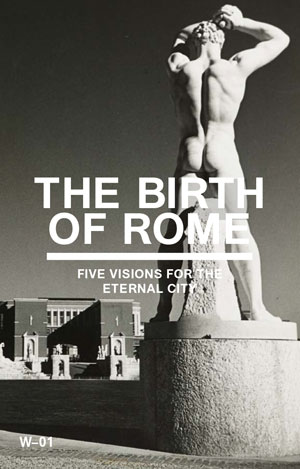
The Birth of Rome
Though more than 15 centuries have passed since the decline and fall of the Roman Empire, the Eternal City remains a durable image of authority, allegiance, and ancient splendor. With an essay by Wolfsonian curator Silvia Barisione, this volume examines 5 architectural visions that demonstrate the persistence of Rome in Italian national consciousness during the interwar years, when the city served as an instrument of state mobilization and the foremost source for efforts to reclaim Italy's imperial past.
The Journal of Decorative and Propaganda Arts (DAPA)
Published by The Wolfsonian since 1986, DAPA fosters new scholarship on modern visual and material culture and parallels themes found in the museum’s collection. Subjects covered by DAPA articles include: world’s fairs posters; Farm Security Administration photographs; Works Progress Administration murals; book jackets; and Italian political drawings. Special themed issues have focused on countries (Argentina, Cuba, Brazil, Mexico, Yugoslavia, and Turkey) and topics such as transportation, hotels, illustrated books, and metalwork.
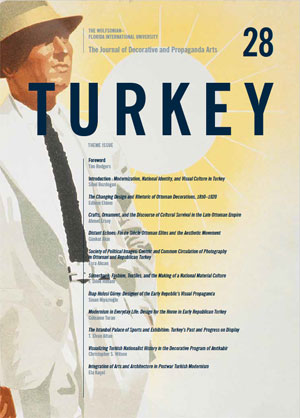
Issue 28: Turkey
This collection of essays by established and younger scholars explores the role of design and decorative arts in the making of modern Turkey. Focusing on the transition from the late Ottoman Empire to the Turkish Republic, the writers reveal how Turkish artists and designers forged a new national identity through experimentation in every creative field from architecture, painting, and sculpture to interiors, fashion, textiles, industrial design, photography, and graphic design.
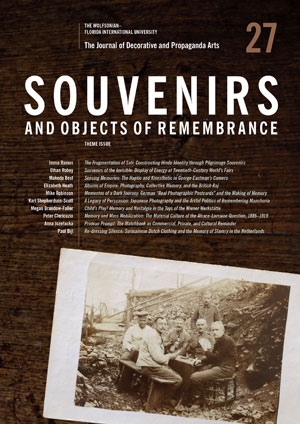
Issue 27: Souvenirs
Objects have always been and continue to be carriers of memory. Featuring 10 essays, this edition offers an interdisciplinary approach to understanding the modern era's objects of remembrance: souvenirs, postcards, photograph albums, clothing, and more. Contributors address the conditions that created a demand for such devices of memory, examine new production processes that made them more cheaply and widely available, and investigate the roles these items played in individual lives and larger communities.
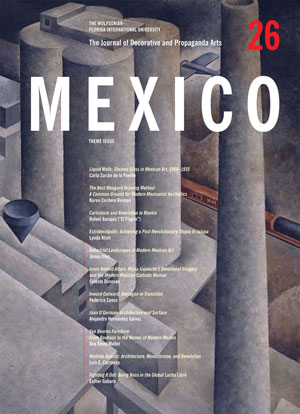
Issue 26: Mexico
Opening up new perspectives in the field of 20th-century Mexican art and visual culture, this scholarship reveals a multifaceted story of Mexican modernism and mexicanidad (Mexicanness). Essays bring together research on a wide array of understudied developments in architecture, painting, decorative arts, propaganda, and other media, looking beyond the more well-known aspects of post-Revolutionary Mexican culture such as muralism toward an expanded portrait of the "Mexican Renaissance."
